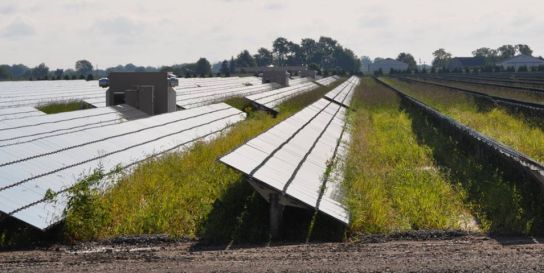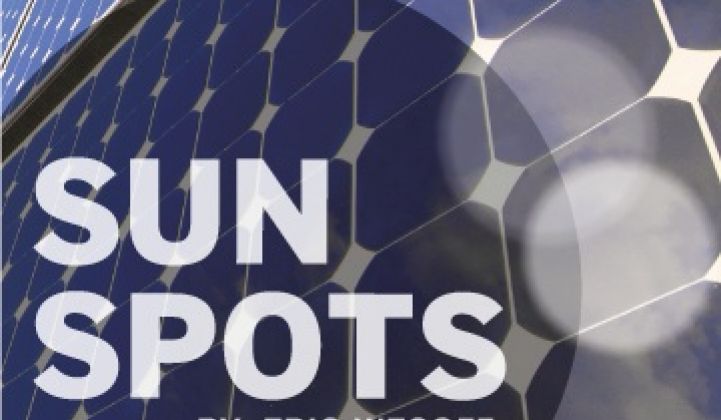Last week we featured a photo of a solar farm in Germany that was overrun by weeds. Strangely, the area between the rows of solar panels appeared to have been groomed.
It turns out that vegetation management is a big deal on solar farms, and tilted panels make O&M a difficult task. Frameless thin-film solar panels make things even trickier. A knowledgeable reader explains:
“Vegetation management is a practical task that needs to be managed in O&M and care needs to be taken with frameless thin-film panels mounted close to the ground, since a mower can easily kick up a rock which could crack the laminate. Typically, fixed-tilt structures are mounted as close as possible to the ground to reduce costs, which can make maintenance more difficult. In addition, in the desert, condensed water can drip from the panels at night creating what is effectively a drip irrigation system which may foster vegetation growth with a fixed system, since the water will fall in a localized area," adding, "People can overlook practical O&M costs, although those are increasingly relevant to project economics as system prices come down and it becomes a higher percentage of LCOE."
"Although sometimes perceived as having higher O&M costs, trackers can actually have lower O&M costs than fixed-tilt structures on a dollar-per-kilowatt-hour basis, and vegetation management is one of the reasons for this. Personnel can easily mow under a tracker placed in a horizontal stow position approximately four feet above the ground.”
Thin-film, fixed-tilt power plant in Ontario, Canada

A lawnmower can't always access the areas below a fixed-tilt panel installation

Here's a photo of a solar farm near Markranstädt, Germany. It's a weed-ridden solar installation photo by Knut Loschke taken in June of last year.
_549_325_80.jpg)



